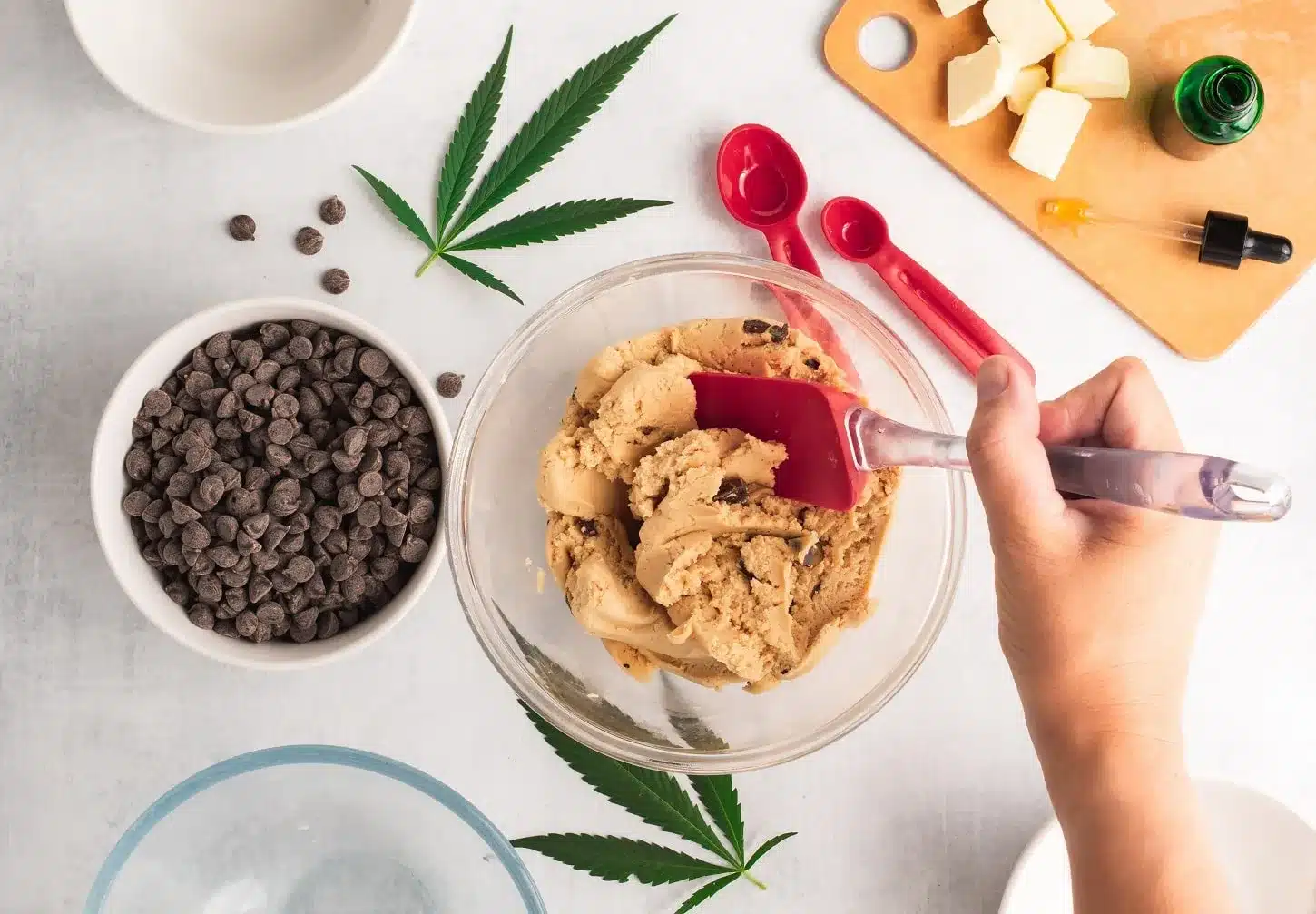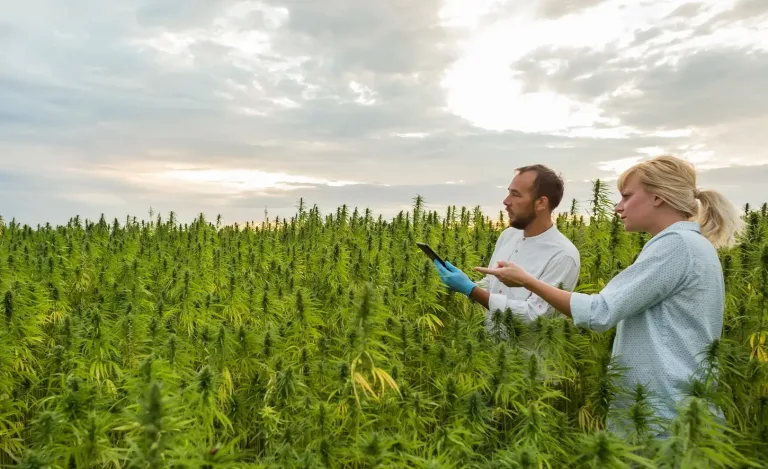With the rise of cannabis legalization in 23 states, more and more people are turning to this versatile plant not just for its recreational purposes but also for its culinary potential.
Properly extracting and infusing the cannabinoids into your sweet and savory recipes is essential for an enjoyable cannabis experience. This typically involves decarboxylating the plant material to activate its psychoactive compounds.
Whether you’re new to this or an experienced cook looking to try something new, we’re here to guide you on how to infuse your favorite dishes with cannabis products. In this blog, we’ll teach you how to cook with cannabis, as well as share tips and cannabis-infused food recipes so that you can make your own edibles.
Why Cook with Cannabis: Benefits of Infusing Food
While smoking has been a popular method of consuming cannabis, it can negatively affect lung health. Also, when smoked, THC (the cannabis compound responsible for psychoactive effects) quickly enters the bloodstream. It then travels to the brain, producing a faster but shorter-lived lasting one to two hours.
In contrast, cannabis-infused food takes 30 minutes to two hours to kick in, as the liver needs time to process cannabis before entering the bloodstream. This delay leads to a longer-lasting high of four to six hours.
One of the benefits of cooking with cannabis, instead of smoking it, is the ability to closely regulate the amount of THC consumed by accurately measuring consistent doses. Additionally, cannabis can be incorporated into a diverse range of sweet and savory dishes, including beverages and condiments.
Choosing the Best Form of Cannabis to Cook With
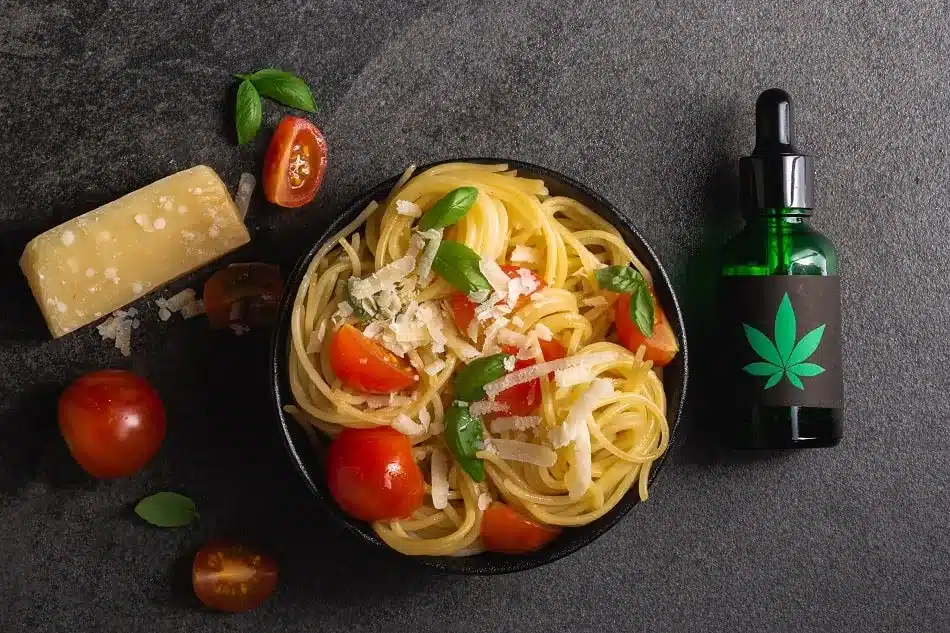
Cooking with cannabis comes in a variety of forms. Among the most widely used are:
Cannabis Flower
Cannabis flowers, available in varying levels of THC and CBD, can be incorporated into various cannabis food recipes, such as baked goods and drinks. With their strong fragrance and delectable sweetness, these flowers bring a burst of flavor to any dish. For an even more heightened taste experience, consider crushing them and blending them with a mix of spices and sugar.
Cannabis Oil
Canna oil is a concentrated liquid extract derived from the cannabis plant. To make it, a solvent, such as alcohol, is used to extract the desired compounds from the plant material. You can utilize a variety of oils, such as olive or coconut oil, as your base and experiment with added ingredients such as honey, butter, or even substitutes like coconut oil or palm shortening.
Cannabis Tinctures
Tinctures are a type of concentrated cannabis mixed with alcohol, glycerin, or plant-based oil. Like canna oil, they are made from cannabis plants by soaking the leaves in alcohol or glycerin. If you use tinctures, add them to your recipe afterward, rather than during the cooking or baking process, to prevent the degradation of THC compounds.
Exploring Different Cannabis Cooking Methods
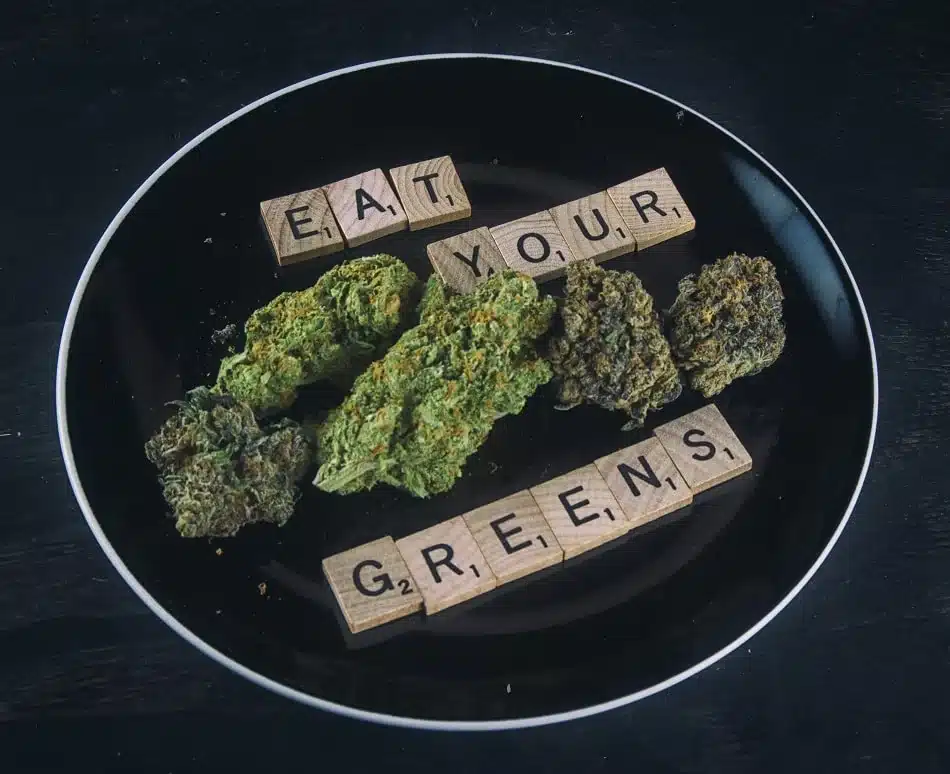
There are a variety of methods you can use to incorporate cannabis as an ingredient in your recipe. One option is to bake the buds, combining them with a fat-like oil or normal butter and adding other ingredients for flavor.
Lemon juice is commonly used in cannabis-infused recipes, such as cannabutter or canna oil. Its acidic properties emulsify the fats and cannabinoids in the oil, making it easier for the body to absorb and increasing the potency of the recipe.
Alternatively, you can brown the buds in a skillet over medium heat, stirring until they turn golden brown. This method is optimal for smaller amounts that are not too moist. Baking and browning are safer than smoking the buds, as they reduce exposure to toxins and leave no unwanted residue.
Tips for Cooking with Cannabis
Whether you’re looking to infuse a subtle flavor or make powerful cannabis-infused dishes, the possibilities for cooking food with cannabis are endless, so long as you have an understanding of dosing and preparation methods.
1. Think about Your Expectations
Here are a few things to consider and be aware of when cooking with medical cannabis:
- Slow onset: When ingesting cannabis, it can take 30 minutes to two hours to kick in.
- Longer and more intense high: THC is slowly released in the bloodstream and takes longer to wear off.
- Different types of high: Many people describe the high from edibles as a “body high” rather than a “head high,” meaning it is soothing and relaxing.
- Increased potency: Edibles are more potent because the digestive process converts THC into 11-hydroxy-THC, which has stronger effects.
- Delayed and unpredictable effects: Metabolism, tolerance, and individual chemistry produce different results from person to person.
- Potential for overconsumption: Due to the delay of effects, there is the risk of consuming too much THC and experiencing an uncomfortable high. Therefore, you should always start with a low dosage and wait for the effects.
2. Pay Attention to Cannabinoid Content

Cannabinoids are compounds that can interact with specific cannabinoid receptors in the brain, such as CB1 and CB2. These compounds are crucial in cooking with cannabis as they are responsible for the effects felt after consuming edibles.
The most well-known cannabinoid is THC, which can produce a “high” effect. CBD is another primary cannabinoid known for its calming effects and ability to provide relief for various conditions like anxiety, depression, pain, and ADHD.
When cooking with cannabis, consider the cannabinoid levels in your chosen strain. High levels of THC can cause overwhelming highs, while high levels of CBD may have extremely lethargic effects.
For example, Sativa strains are frequently suggested for use during the day, as they are said to provide a more energizing effect with a focus on the mind. On the other hand, Indica strains are often referred to as “bedtime strains” due to their reported ability to calm the body and mind.
3. Consider Dosage Calculations
Always use lab-tested cannabis flowers with defined cannabinoid percentages to determine serving sizes accurately. For beginners, a recommended dose is 1 to 5 milligrams of THC. To calculate the THC content in your recipe, let’s assume you start with 10 grams of cannabis flower with a THC percentage of 20%, which amounts to a total of 2,000 milligrams of THC.
After decarboxylation, which is typically 90% effective, you’d have 1,800 milligrams. Assuming that the base ingredient absorbs about 60% of the available THC (1,800 x 0.6) leaves you with 1,080 milligrams. This amount is sufficient for about 216 servings of 5-milligram doses.
The fats in your base ingredient can only bind with a limited number of cannabinoids. To ensure proper dosing in your recipe, use no more than one cup of cannabis flower for each cup of oil or butter. For example, coconut oil, which has more saturated fats, can absorb even more cannabinoids from the bud.
4. Avoid Using Raw Cannabis
Fresh marijuana from the plant does not have mind-altering effects. In its unaltered state, it is like any other vegetable, such as spinach or kale. The buds must be dried and cured before use to unlock their cannabinoids. Luckily, most dispensary-bought weed is already prepared, so there is no need to worry about this step.
Still, simply adding a bag of buds to your brownie mix won’t result in successful cannabis-infused food ideas. There are a few more considerations to take into account before you can start incorporating marijuana into your favorite recipe
5. Always Decarboxylate Your Cannabis
When preparing edibles, the key is to decarboxylate the cannabis, which involves heating it to convert the THCA to THC and CBDA to CBD.
The decarboxylation process removes an extra carboxyl group from the cannabinoids, allowing them to bind to the body’s receptors.
To decarboxylate, evenly spread the cannabis on a baking sheet, heat the oven to 245 degrees Fahrenheit, and bake for 30-40 minutes, flipping the buds every 10 minutes.
6. Optimize Your Cannabis Cooking with a Herb Grinder
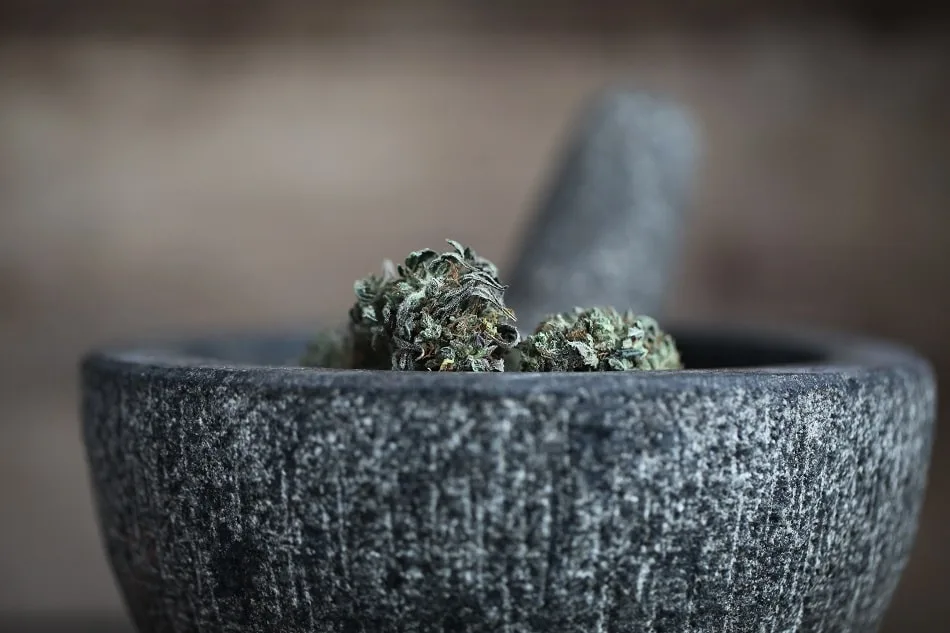
Once you have decarboxylated your cannabis, grinding it further enhances the surface area of the buds. This allows the solvent you use to dissolve a greater number of trichomes, maximizing the extraction potential.
Trichomes, the hair-like structures of the buds, are where most beneficial cannabinoids are found. Therefore, maximizing the incorporation of trichomes into your food will ultimately result in a more potent and effective final product for consumption.
7. Stay Within the Optimal Temperature Range
When temperatures exceed 350°F, THC and other compounds start to degrade, leading to edibles that are less potent than expected. Therefore, it is advised to avoid using high-heat cooking methods and instead add cannabis-infused ingredients toward the end of the cooking process. Keep a close eye on your oven’s temperature when making edibles – 338°F is ideal for safety and preserving cannabis potency.
8. Consider the Power of Cannabutter or Cannaoil
Discovering the full capabilities of cannabinoids in your cooking is effortless when using cannabis-infused butter or oil. By infusing these ingredients with cannabis, following recipes becomes a breeze. With ready-made cannabis-infused butter or oil, all you need to do is measure, mix, and cook or bake, simplifying the overall cooking experience.
9. Think about Properly Storing Cannabis Edibles
After completing a recipe, storing and labeling your edibles properly is crucial. To prolong the shelf life, brownies are best kept in a sealed container in the refrigerator, while cannabis-infused oil can be stored safely on a pantry shelf.
But the most important step is proper labeling. Ensure that your edibles are marked and kept out of reach of children, pets, or adults who are unaware of the cannabis content in your homemade treats.
Delicious Cannabis Recipes and Ideas

From classic chocolate cookies to savory pasta dishes, there is so much you can experiment with and make when it comes to cannabis food ideas.
Cannabis-Infused Chocolate Cookies
Cannabis-infused chocolate cookies have become a popular choice for those looking to enjoy the benefits of cannabis in a tasty and easy-to-dose treat. They incorporate cannabis-infused butter, tinctures, or oil into a classic chocolate cookie recipe.
Once baked, these cookies deliver a delicious combination of rich chocolate flavor and a subtle high from the infused cannabis. With many recipes available, it’s important to carefully measure your dosage to ensure a consistent and enjoyable experience.
Cannabis-Infused Pasta
Cannabis-infused pasta is a delicious and comforting way to incorporate cannabis into your cooking. This comfort food dish is perfect for a dinner with friends or a relaxing night at home.
Pairing the pasta with a cannabis sauce, such as a creamy pesto or a savory marinara, adds another layer of flavor and provides an enjoyable meal for cannabis lovers and newcomers alike.
Plus, the versatility of cannabis sauces accommodates hundreds of flavor combinations to suit any palate.
Cannabis-Infused Olive Oil
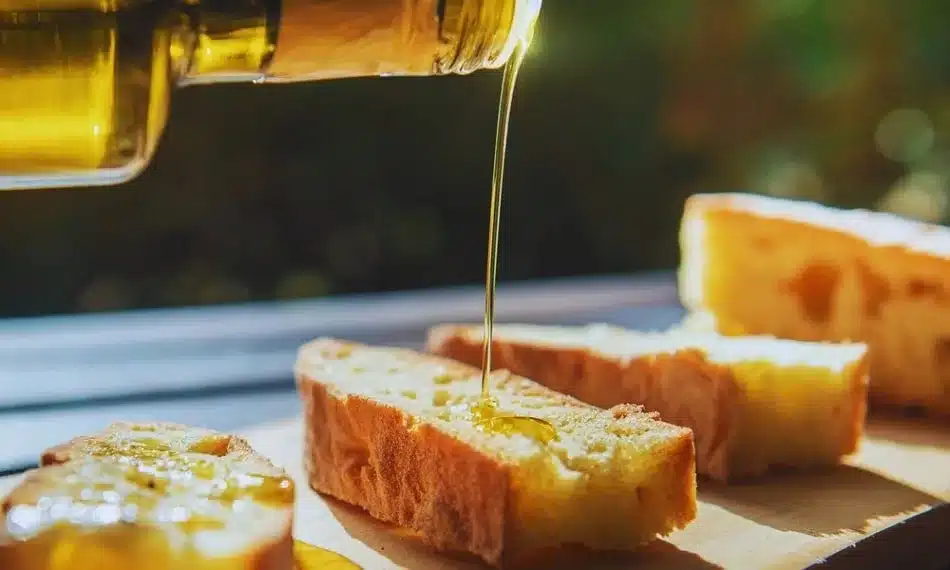
Cannabis-infused olive oil is another popular method of consuming cannabis that offers a unique flavor and a convenient way to incorporate the plant into everyday cooking. Oil can be used in various recipes, including salad dressings, pasta dishes, and baked goods.
There are several methods to make cannabis-infused olive oil, ranging from using a slow cooker to simply heating the oil with ground cannabis on the stove. The key is to finely grind the cannabis and infuse it with the oil over low heat for an extended period of time.
Cannabis-Infused Tea
The process of making cannabis-infused tea can vary, but the most common method is to infuse the tea leaves with cannabis oil or tincture. Some people also prefer to use decarboxylated cannabis flowers. The tea can be made by steeping the infused leaves in hot water or using a slow cooker or stove-top method.
Adding ingredients like milk, honey, or spices can enhance the flavor and effects of the tea. Just be aware of the tea’s potency. Start with small doses, as the effects may be stronger and longer-lasting than traditional forms of cannabis consumption.
Cannabis-Infused Breakfast
Cannabis-infused breakfast dishes are a delicious alternative way to start your day. There are various methods, such as using infused oils, tinctures, or cannabutter to make breakfast cannabis food. One popular option is to make cannabis-infused pancakes or waffles by adding cannabutter to the batter.
Another is to incorporate cannabis into your morning smoothie by using infused coconut oil or tincture. You can also make a hearty breakfast sandwich by spreading cannabutter on your toast or adding cannabis oil to your eggs.
Discover a Wide Range of High-Quality Cannabis Products at Windy City Cannabis
Cooking with cannabis is a fun and creative way to enjoy the benefits of this versatile plant. Follow the tips and techniques mentioned in this blog, and you can easily infuse your favorite dishes and elevate your culinary experience.
Start with low doses, use quality ingredients the recipe calls for, and experiment with different flavors to discover what works best. Remember to consume responsibly and always consult your local laws before indulging in any cannabis-infused meals.
At Windy City Cannabis, we are dedicated to providing a wide range of top-quality cannabis products to enhance your overall cannabis experience. From flowers to edibles, concentrates, and more – we have some of the finest products on the market if you want to start baking or cooking with cannabis. Contact us today!
Sign Up for Our Rewards Program
Find your perfect cannabis products at Windy City Cannabis. Whether you’re a medical or recreational user, we’ve got you covered.
